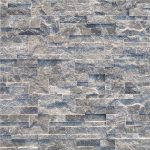The Beauty and Benefits of Cultured Flagstone A Comprehensive Guide
Introduction Flagstone is a popular choice for outdoor hardscaping projects due to its durability, versatility, and natural beauty. Cultured flagstone, also known as manufactured flagstone, is a man-made alternative to natural flagstone that offers many advantages. In this comprehensive guide, we will explore the beauty and benefits of cultured flagstone, including its composition, installation methods, maintenance requirements, and design possibilities. Composition of Cultured Flagstone Cultured flagstone is typically made from a combination of concrete, aggregate materials, and color additives. The manufacturing process involves pouring a mixture of these materials into molds that mimic the appearance of natural flagstone. The molds can be designed to replicate a variety of shapes, sizes, textures, and colors, allowing for endless design possibilities. One of the key advantages of cultured flagstone is its consistency in size and shape, which can be difficult to achieve with natural flagstone due to its irregularities. This consistency makes installation easier and more efficient, resulting in a more uniform and polished finish. Installation Methods Installing cultured flagstone is a straightforward process that can be completed by DIY enthusiasts or professional contractors. The first step is to prepare the area where the flagstone will be installed by excavating the site, leveling the ground, and compacting the soil. A base of gravel or sand is then laid down to provide a stable foundation for the flagstone. Once the base is in place, the cultured flagstone pieces are arranged according to the desired pattern and design. The pieces can be dry-laid, meaning they are simply placed on top of the base without any adhesive, or they can be adhered to the base using mortar or a bonding agent. Grout or sand can be used to fill the gaps between the flagstone pieces, creating a cohesive and seamless look. Maintenance Requirements Cultured flagstone is a low-maintenance option for outdoor hardscaping projects. To keep cultured flagstone looking its best, regular cleaning is recommended. Sweeping or blowing away debris, such as leaves and dirt, can help prevent staining and discoloration. For more thorough cleaning, a mild detergent and water solution can be used to scrub the flagstone surface. Sealing cultured flagstone is optional but can help enhance its durability and longevity. Unglazed mosaic tile for earthy textures can protect the flagstone from water damage, staining, and fading caused by UV exposure. It is important to follow the manufacturer's recommendations for sealant application and reapplication to ensure optimal protection. Design Possibilities Cultured flagstone offers endless design possibilities for outdoor spaces, from patios and walkways to pool decks and retaining walls. The versatility of cultured flagstone allows for customization in terms of color, texture, shape, and size. Whether you prefer a rustic, natural look or a sleek, modern aesthetic, there is a cultured flagstone option to suit your design preferences. In addition to its aesthetic appeal, cultured flagstone is also a practical choice for outdoor hardscaping projects. Its durability and weather resistance make it an ideal material for high-traffic areas that are exposed to the elements. Cultured flagstone is also slip-resistant, making it a safe choice for pool decks and other wet areas.  Conclusion Cultured flagstone is a versatile and durable alternative to natural flagstone that offers many benefits for outdoor hardscaping projects. Its composition of concrete, aggregate materials, and color additives allows for endless design possibilities, while its consistency in size and shape makes installation easier and more efficient. With regular maintenance and proper sealing, cultured flagstone can maintain its beauty and functionality for years to come. Consider using cultured flagstone for your next outdoor hardscaping project to enhance the beauty and value of your property.
Conclusion Cultured flagstone is a versatile and durable alternative to natural flagstone that offers many benefits for outdoor hardscaping projects. Its composition of concrete, aggregate materials, and color additives allows for endless design possibilities, while its consistency in size and shape makes installation easier and more efficient. With regular maintenance and proper sealing, cultured flagstone can maintain its beauty and functionality for years to come. Consider using cultured flagstone for your next outdoor hardscaping project to enhance the beauty and value of your property.